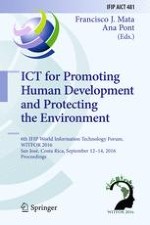2016 | OriginalPaper | Chapter
A Community Assets Infrastructure for the Secure Use of Mobile Computing Devices in the Rural Health Landscape
Authors : Kevin Kativu, Dalenca Pottas
Published in: ICT for Promoting Human Development and Protecting the Environment
Publisher: Springer International Publishing
Activate our intelligent search to find suitable subject content or patents.
Select sections of text to find matching patents with Artificial Intelligence. powered by
Select sections of text to find additional relevant content using AI-assisted search. powered by
